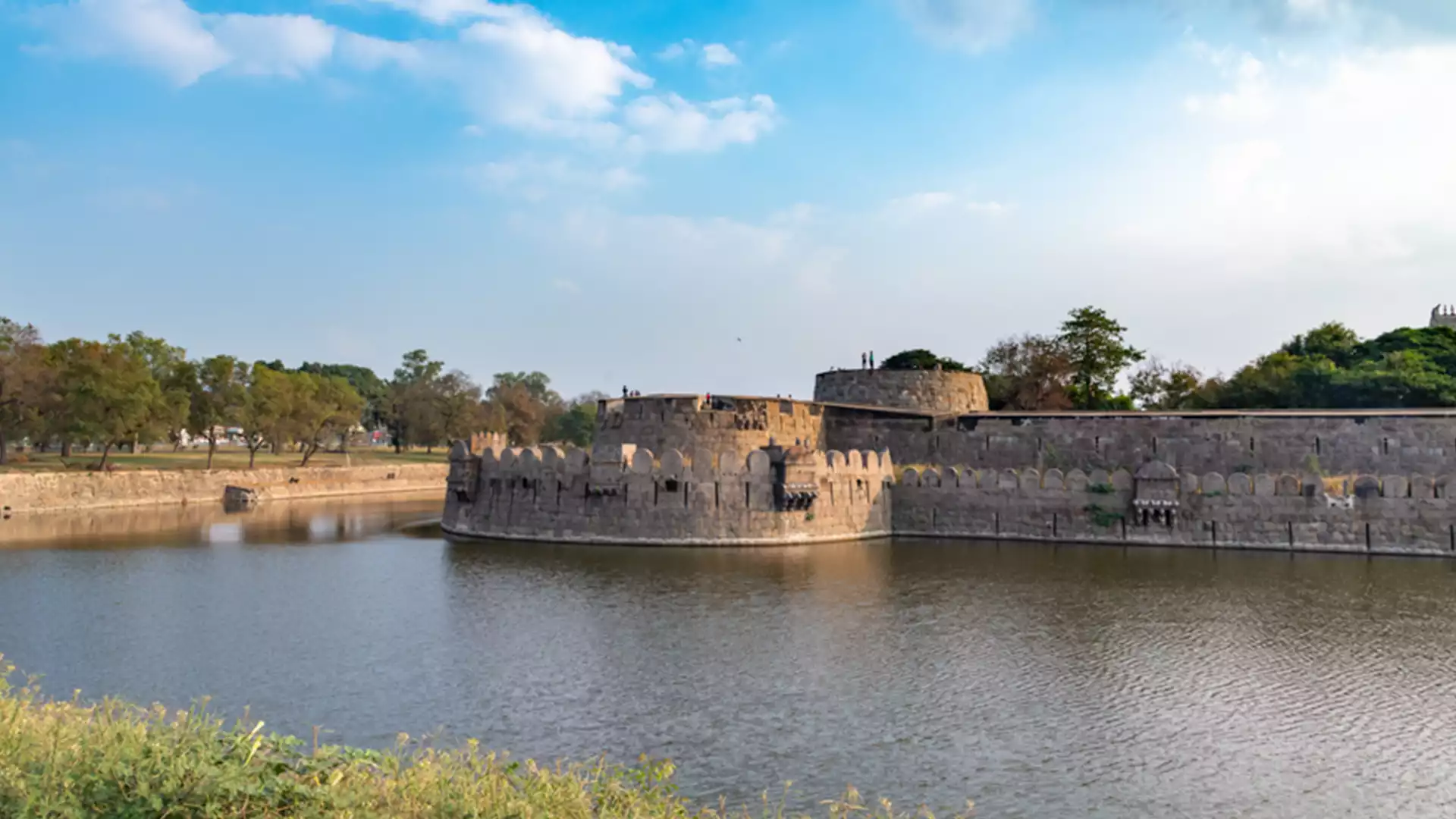
As a traveller, you might be interested in visiting the Vellore Fort, a remarkable example of military architecture in South India that was built in the 16th century by the chieftains of the Vijayanagara dynasty, Channa Bommi and Thimma Reddy Nayaka, under the rule of Sadashiva Raya. This impressive granite fort is constructed using granite from nearby quarries in the Arcot and Chittor areas, and it covers a sprawling area of 133 acres. Today, it is maintained by the Archaeological Survey of India. At the entrance, you'll see a huge moat that was once home to 10,000 crocodiles!
The Muslim kings of Bijapur, the Adil Shahis, conquered the fort in the 17th century. The Marathas then took control of it, and in the early 18th century Daud Khan of Delhi did the same. In 1768, the British seized control of this fort, and they held it until independence. Both the family of Tipu Sultan and Vikrama Rajasinha, the final ruler of Sri Lanka, were imprisoned in the fort during the British administration.
You can see several religious and other buildings inside the fort, including a mosque, a church, a temple, a government museum, Tipu Mahal, Begum Mahal, Kandi Mahal, and the famous Vellore Christian Hospital. The sculptures at the fort's Jalagandeeswarar Temple are well-known for their craft and beauty. This fort also houses Muthu Mandapam, a memorial constructed around the grave of Vikrama Rajasinha, the final king of Sri Lanka. It is open from 8.00 am to 6.00 pm and the museum from 9:00 am to 12.30 pm and from 2:00 pm to 5:00 pm except on public holidays. The entry fee is Rs.5.